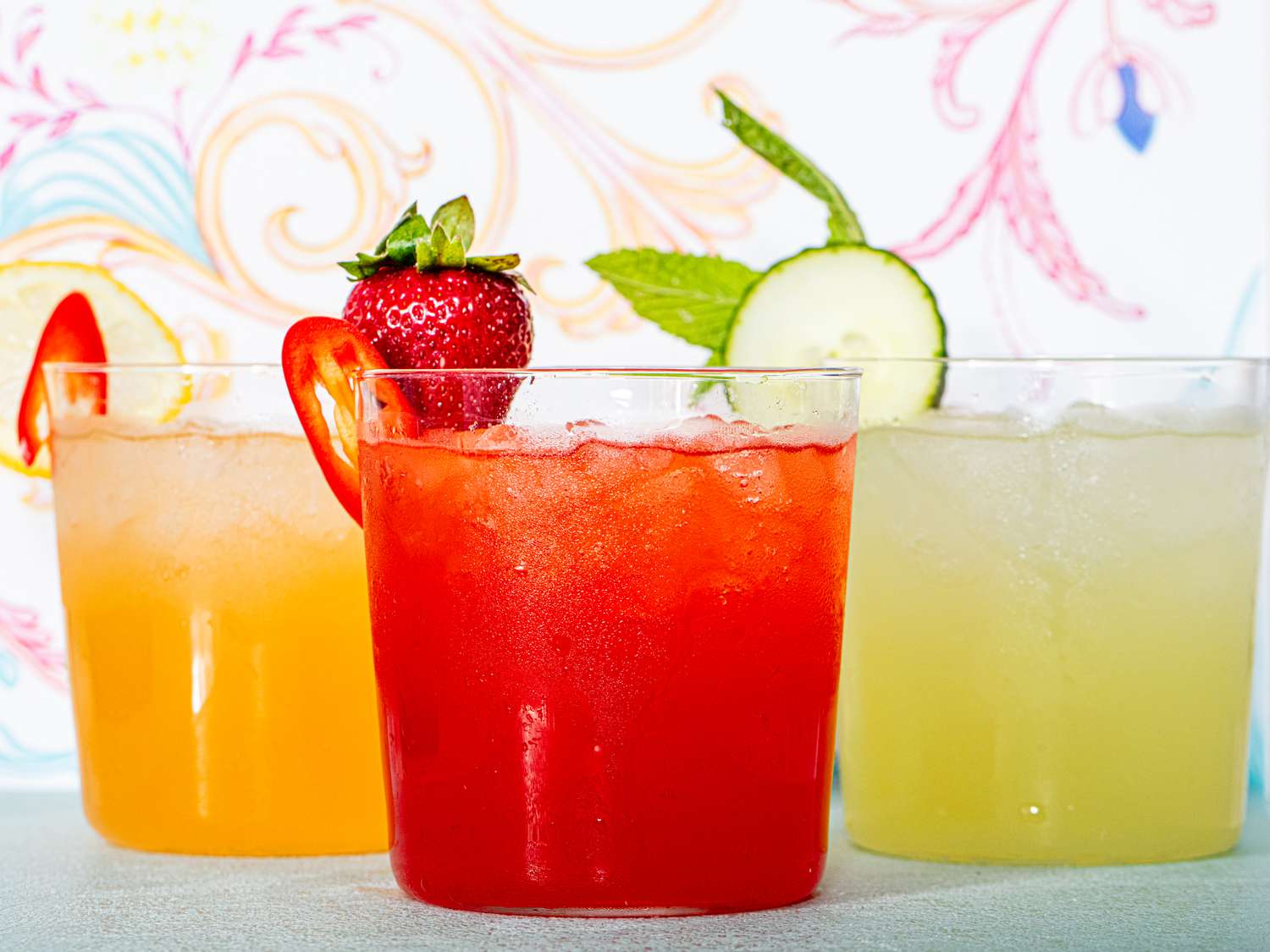Why It Works
- Macerating strawberries and lemon zest draws out the strawberries’s juices and the zest’s natural oils, resulting in a more flavorful lemonade.
- Fat-soluble capsaicin dissolves into the oils from the macerated lemon zest, releasing the chiles’ natural fruity flavor.
- This no-cook technique dissolves the sugar without the need for whisking.
I’m a firm believer in not reinventing the wheel, so when it came time to create a flavorful spicy strawberry lemonade, I did what any efficient recipe developer would: I brazenly cribbed from my colleagues. Which is to say, this recipe for a spicy strawberry lemonade is really Genevieve Yam’s recipe for strawberry lemonade (and that recipe was built on the towering shoulders of Stella Parks’ ultra-flavorful lemonade recipe). All I did was add the chiles, though I can at least take credit for having a lot of intention behind how I added those chiles.
Serious Eats / Amanda Suarez
To be clear, I used their recipes because they’re so good, so thoughtful, and so much better than most of the other recipes out there for this sort of thing. Anyone can make a lemonade by mixing juice with sugar and water, and anyone can add strawberry flavor by muddling some ripe berries into the mix. But Stella’s use of oleo-saccharum, in which lemon zests are macerated in sugar to draw out the flavorful and aromatic essential oils into a bright and fruity syrup, leads to a lemonade with complexity way beyond the typical stuff. And Genevieve’s adaptation of that method to also macerate berries with the zest for a vibrant red and intensely fruity strawberry-lemon syrup is just as effective, and way more delicious than the more basic alternative. Why would I not do the same?
My little innovation was to work chiles into the mix to capitalize even further on this technique.
The Science of Extracting Chile Flavor for Spicy Lemonade
The thing with chiles is that much of their heat and flavor is fat-soluble, which can present a challenge for getting their full effect in a drink that is made only of juice, sugar, and water. That’s not to say you can’t muddle chiles into a lemonade—you can and you will of course taste them. But fat is the better vehicle for pulling out their full range of flavor and heat, and it’s not an ingredient in almost any lemonade I’ve ever seen. Or is it?
This is where that oleo-saccharum lemonade base the Stella and Genevieve both used in their recipes comes in. The process of making oleo-saccharaum involves muddling and then macerating citrus zest with sugar. As the mixture sits, the oils in the zest leach out, wetting the sugar in a fatty glaze. At the same time, water that’s also in the zest (and in this case in the strawberries as well) is pulled out too, dissolving the sugar and forming a syrupy emulsion with the oils.
Serious Eats / Amanda Suarez
Those oils, in turn, are exactly the kind of fat-based flavor-extracting medium we want for the chiles. By mincing the chiles finely and letting them sit in the sugary mixture with the lemon zest and strawberries, we get a powerfully flavorful syrup that, once mixed with the tart juice of the lemons, forms a concentrated flavor base for our drink. It works beautifully.
For this recipe, I tried not to go too hard on the chiles, since I find a more gentle heat to be pleasant with the fruity strawberries, versus the higher levels of heat I aimed for in my basic spicy lemonade and my refreshing cucumber-jalapeño limeade. I also opted for red chiles here, since I think their more ripe, fruity flavor pairs better with the berries and lemons than a green chile would.
You can of course increase the amount of chiles in this recipe if you want an even hotter drink, or decrease them if you want the chile element to be a more subtle background heat. That’s the fun: You can take my recipe, tweak it slightly, and call it “yours” (though I’d of course appreciate a little bit of credit…alongside Genevieve and Stella).


